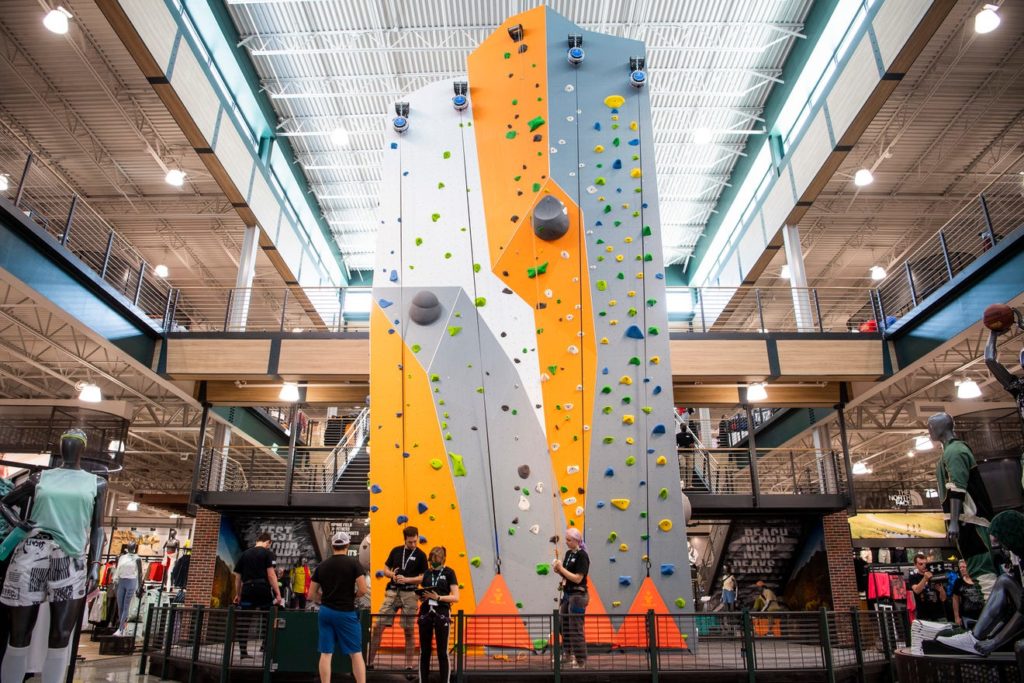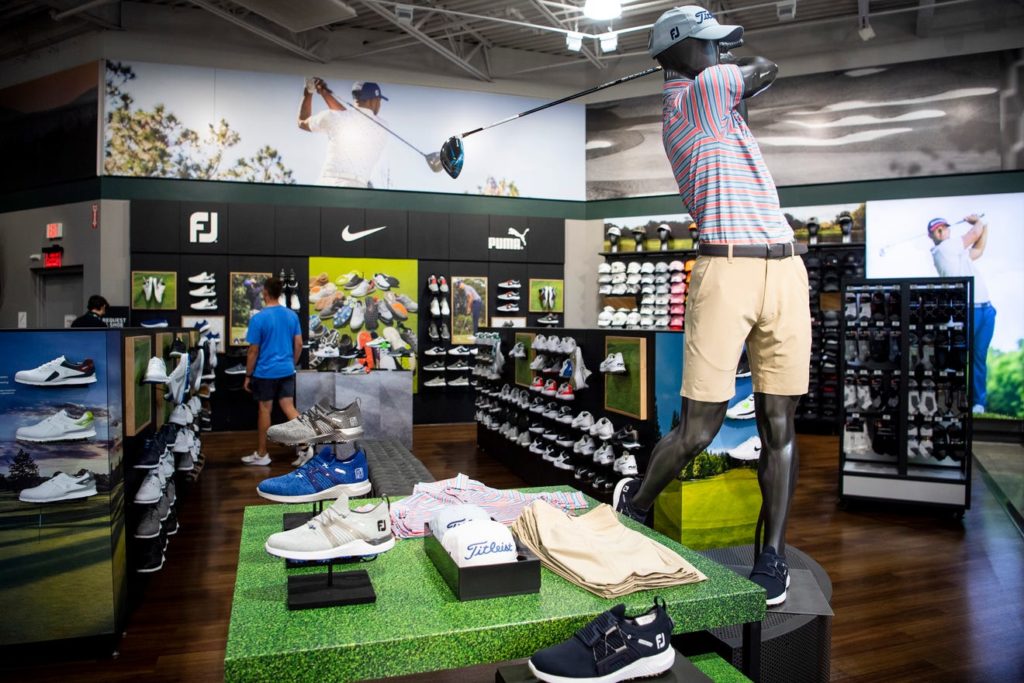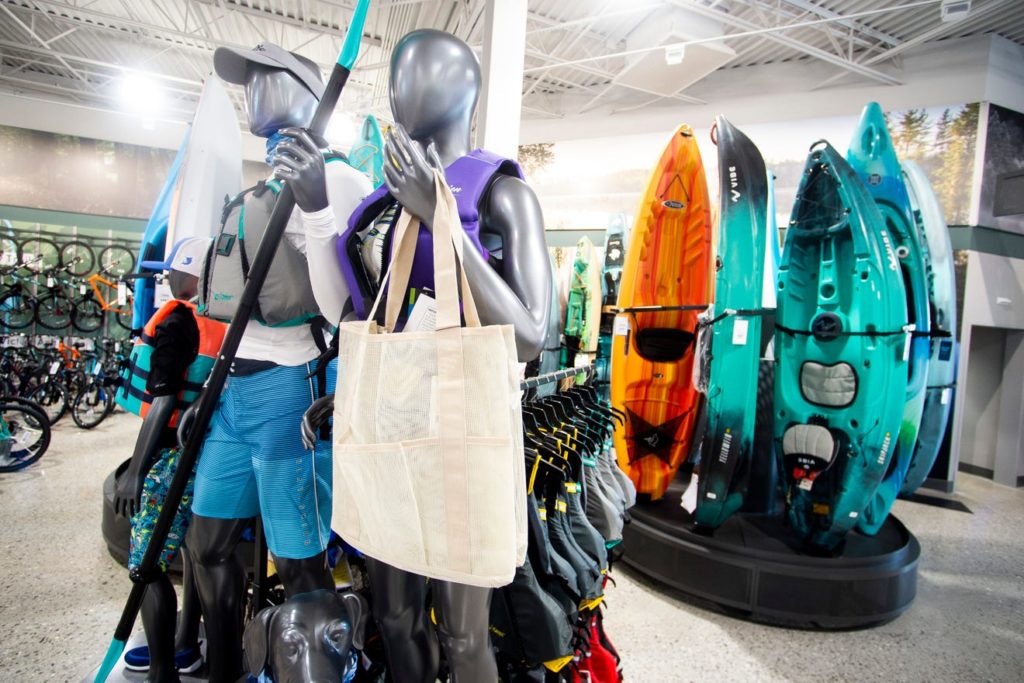September 30, 2021
In retail, innovation is hard work. Material, supply chain and real estate costs prevent brick and mortar-based brands from spinning up A/B tests as quickly and cheaply as their digital native counterparts. Instead, they have to take big risks, make big investments, listen closely to their customers and employees, and shift accordingly. (And then repeat, and repeat, and repeat the process.)
When executed correctly and efficiently, this “test and learn” approach can set a new course for an entire brand’s trajectory. Case-in-point: Dick’s Sporting Goods.
Dick’s, the largest sporting goods retailer in the United States, recently unveiled their newest store concept: Dick’s House of Sport. The debut location – a 100,000 square-foot store located just outside Rochester, NY – opened in July and features batting cages, a rock-climbing wall, and outdoor turf field, and a running track. Dick’s has also opened a second location in Knoxville, TN. Dubbed “a place to connect and play,” House of Sport is about more than shopping – it’s a destination where members of the local community can get inspired and practice their skills.
During a recent investor call, Lauren Hobart, Dick’s President, CEO & Director, discussed how learnings from House of Sport are informing broad changes across Dick’s larger fleet. “We’re very excited by the early results and are continuing to pursue both other opportunities, and then also bringing some of the core benefits back into the core Dick’s stores,” she said.

House of Sport features “a much more elevated model” in its fitting rooms: Associates bring outfits in from the salesfloor, provide personalized outfitting advice, and actively help customers outfit themselves. “That’s something that we’re looking to try in the DICK’S store,” said Hobart. “There’s an incredibly strong service model throughout the entire [House of Sport] store.”

House of Sport features a 17,000-square foot outdoor turf field and running track that can be reserved by local community organizations for practice, play, or recruiting events. So far, the response has been incredibly positive: “It’s already completely booked,” said Hobart.
Similarly, reserved spots on the store’s rock climbing wall fill up quickly “every single minute of the day that you can sign up.” While Hobart admits that turf fields and rock climbing walls aren’t wise investments for every Dick’s location, the company is certainly “more bullish on looking into experiences.”

Lee Belitsky, Dick’s Executive VP & CFO, was quick to point out learnings around the specific assortment at House of Sport stores, and how certain experiences help the company compete with more niche retailers. He pointed to the golf business as an example: “We’re always concerned about how much golf business can we do outside of a specialty golf store, but with the experiences we’ve built into the House of Sport stores, the golf business has really been outstanding there.”
The new Dick’s stores feature three virtual golf-driving bays and a putting green – all elements that elevate the shopping experience. Dick’s leadership team says they plan to incorporate some of those golf elements into regular Dick’s stores as well, to boost the golf business across their more than 850 stores nationwide.

“There’s a really nice merchandising strategy in House of Sport,” said Hobart. The large-format stores boast a wide selection of athletic and outdoor apparel brands, footwear and the latest gear for team sports and top-of-the-line equipment for golf and fitness. But the real differentiating factor is how that selection is presented to the customer: holistically.
Hobart cites the “combination of hardlines and softlines” – that is, apparel product (say, soccer jerseys and cleats) merchandised next to hard goods (such as soccer balls, practice nets, or even water bottles – as the key to creating a more immersive, inviting experience. “When you walk around the store, you’re getting holistic solutions,” she said. “That’s something else that we’re really looking into for the Dick’s stores.”
While outfitting every Dick’s store with virtual driving ranges and massive climbing walls isn’t exactly practical in the short-term, implementing an elevated, stylist-like service across a fleet of more than 850 stores seems like low-hanging fruit. After all, there’s no physical infrastructure to deploy, no implications for product assortment or real estate. You’d just need to re-train your store employees. Simple, right?
Not so fast. Such roll-outs would be a tall order for any retailer, even a powerhouse like Dick’s. Over the past decade, retailers across nearly every specialty sector have slashed labor budgets to compete with online storefronts, inadvertently creating a culture of low wages, on-call shifts, and disgruntled employees. Expecting these same front line workers to transform into knowledgeable product experts and visual merchandisers would require a massive investment – ideally in the form of technology.
Research shows that only 29% of direction sent by corporate headquarters is correctly executed by store teams. This means that no matter how smitten the C-Suite is with a new initiative, their grand plans aren’t going to magically come to life across an entire fleet of stores.
For years retailers have struggled to figure out how to provide better information to front line associates, resisting company-owned mobile devices as too expensive (or BYOD policies as too difficult to implement.) Instead, they’ve relied on antiquated methods to assess if their teams out in stores are actually doing the things they need to do: putting up new marketing, pulling inventory out of the back room, rearranging fixtures on the sales floor, or talking to customers about the latest promotions. They might send their upper field leaders out into stores for surprise visits, or comb through the weekend’s customer experience survey results.
But assessing store execution in this way only allows you to fix store team behavior after it’s already had a negative impact on the other areas of your business. In short – you’re playing defense, not offense. Chances are you’re only asking your DMs to check on store execution if your sales numbers are looking bleak. And by that time the damage is already done. It’s too late.
“Test and Learn” is a useless strategy if those learnings aren’t truly coming to life across every single location in your fleet. Fortunately, Zipline was built especially for this use case.
Zipline’s unique approach drives better store execution through streamlined, clear communication. Unlike other task management platforms on the market, Zipline gives executives, upper field leaders, and even cross-functional business partners instant visibility into what’s getting done in stores. This level of transparency, in turn, drives increased accountability at every level of a retailer’s brick and mortar fleet.
Want to learn more about how Zipline can bring your successful tests to life across every store? We’ve made our solution easy to implement, fun to use, and useful for stores and HQ alike. We’d love to give you a deeper look. Reach out today to learn more.
Recent Posts
Company News
Zippy is Officially Here!
Employee Engagement
NRF 2025 Day 3 Insights
Industry Trends
NRF 2025 Day 2 Insights
Industry Trends
NRF 2025 Day 1 Insights
Industry Trends
NRF 2025 is your best NRF yet!
Company News
Your ultimate fantasy retail team: Zipline, Legion, RetailNext
Company News
Meet the Retail Rockstars at NRF 2025: Learn, Network, and Get Inspired
Company News
Lighting Up Times Square: A Love Letter to Store Employees
Company News
Zipline Named a Finalist for the NRF VIP Awards!
Retail Communications
How Visionworks Brought Comms into Focus with Creative Hubs
Retail Communications
How L.L.Bean Made Store Communication Awesome
